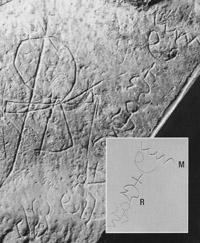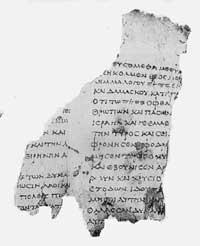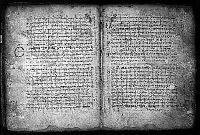From the dark times of writing to the present light
1996/04/01 Aurkerenea, Joseba Iturria: Elhuyar aldizkaria

In 1441 Joan Gutenberg invented the printing press in the Mainz. It soon spread throughout the world, which allowed for the proliferation and encompassing of books everywhere. Undoubtedly, the influence of the printing press on the development of societies has been enormous, so it can be distinguished between the previous and the subsequent era of the Printing Press.
First manifestations of writing
Human groups of yesteryear, based on the sounds of nature, created the first onomatopeic words. With their development, from these basic words, different communication systems emerged that gave rise to the initial languages.
With the passage of time, these human groups proliferated and spread throughout all corners of the world, while carrying those languages. Language was the most suitable tool for communication, but it was not complete. Because the words are dragged by the wind, they realized the need to somehow maintain and consolidate the ideas, achievements and aspirations of the human team. The human being began to seek sustainable forms of expression and the first forms of writing that emerged in this process.

The oldest writing or writing we know today dates back to dark times. Thus, for example, the old Peruvian natives used colored laces full of polyps or knots to explain their stories, in the same task in which the Iroquian Indians made vegetable necklaces and belts decorated with wampunes and shells, and the old inhabitants of Australia communicated their orders and news recording their symbols in the so-called wooden diners.
In addition to those already mentioned, in the columns and dolmens, you can find the magic symbols used to communicate with God or with the rest of human beings. All of them are graphic principles of the origin of different scriptures and similar can be found in most civilizations. On the contrary, they are hieroglyphics of the first Egyptian communication systems that we can consider a true scripture.
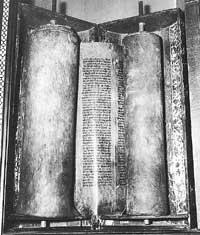
These symbols appear engraved in wood and stones and represent plants, animals, human figures, useful or astros. By reflecting each of these symbols a single idea, it is also known as painting of thought. Until 1828 it was not possible to interpret hieroglyphics. That same year, the French Egyptologist Chanpollion was able to read the stone known as Rosseta and later used to interpret hieroglyphs. It was a huge achievement and it has been known, among other things, that in the development of hieroglyphs different systems and times can be distinguished. For years the style of hieroglyphics was softened and in the last times of the empire the priests succeeded in completely shortening the writing through the so-called hierotic. Likewise, it has been confirmed that when the so-called demotic writing was extended among the citizenry.
Development of writing
In the development of writing, we can distinguish the steps given for the decomposition of the word. For example, they realized that the word can be divided into syllables and that syllables are formed by letters. By applying a graphic symbol to these letters, a literary or alphabetic script is created. Apparently, the first alphabet formed by 22 symbols is due to the Phoenician prince Cadmo of the time of Moses. He pioneered the creation of the rest of writing models based on this system: Hebrew, Aramaic, etc. Likewise, the primitive Greek alphabet is based on the same model, composed of 16 symbols, and hence the Latin and Ulfilan alphabet.
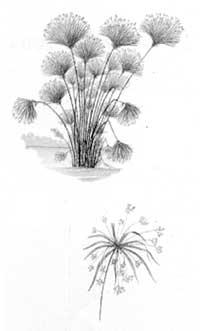
The Latin alphabet of this time was formed by 22 symbols that were written and read from right to left. Explaining the domain of this writing system is nothing complicated. In fact, it moved to all the territories conquered by the Roman Empire, so the dominated peoples adopted this system of writing and, in some cases, adapted it to the language of the natives.
The carolignical system which gave separately the words that arose in the times of the Franco king Xarloman. Making a big leap in time, woodcut allowed all the discoveries that have been described to be extended to everyone. Recorded in a small table, it allowed the massive use of words, symbols and drawings, from which the main media of books and culture in general were known.
But if we speak of jumps, we must go to 1441. In fact, since Gutenberg invented the printing press, the production of books and the dissemination of culture were guaranteed.
Materials used throughout history
Often, in researching the history of writing, one tends to summarize the history of graphism. This would greatly limit our subject of study, completely forgetting the materials that man has used to write throughout the years and the mines. However, if one wants to give a more global and rich vision, we believe that it is necessary to analyze these materials that have been considered as manifestations by different civilizations, since in some cases as important as the graphics are the resources used by the human being as the basis of the graphics.
As we have said before, the strange materials used by man to write were stone and wood, where he recorded the basic symbols. Later the clay was used, as shown by the first “libraries” exposed in the area of Mesopotamia. Apart from this, the loops and color knots that we have not yet deciphered today were also the basis of writing.
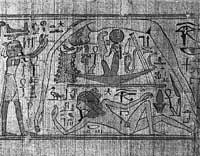
However, whenever we speak of ancient materials of letters, the papyrus comes to mind, since many of the great historical passages have reached us through it.
Papyrus is a two or three metre plant that grows on the banks of the Nile River and other rivers of North Africa. In Egypt the papyrus was used with assiduity, it was adapted to write with the plant on ribbons of about 18 meters and it was written with the ink obtained from animals or other plants and with the bird pen. Once written in papyrus, these long ribbons were collected in wooden cylinders and opened with a hand to read what was written. The process we have seen in countless films was carried out like this.
It is especially famous the magnificent library that housed books made in papyrus in the city of Alexandria. In other cities, a great effort was made to create libraries that spread the prestige of the people, and the new situation proposed an atmosphere of competition that is perceived today in the paper market. Determined to advance, Alexandria began to limit the export of papyrus, which caused an unexpected reaction. In fact, Pergamo began to use papyrus replacement material. II. In the nineteenth century: cattle leather parchment. Due to its ease of conservation and use, the scroll was quickly imposed and the papyrus is limited to Egypt.
Unlike the papyrus, the parchment propitiated a simple and comfortable way of organizing the writings. In fact, with the veins of the cows and the binding on the tablets, the first collections of leaves or codes that we can consider as precursors of the current books emerged.
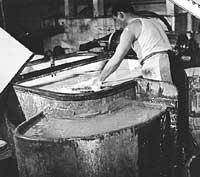
All that has been exposed so far corresponds to Western civilizations. In the eastern part they had long been using papers of rags, bamboo and rice or mazurza fiber. The most important jump also took place in the East in the year 105 by the Chinese Ts’ai Lun. In fact, through the chemical treatment of pasta formed by plants, it produced paper.
The fame of the discovery spread quickly to all of China, Korea, Japan, etc. Around the year 750, the Arabs also knew the paper, but in it still used cotton rags. Taken by the Arabs, the paper reached North Africa and Europe. In 1554, the first European paper mill was built in Xatiba.
Importance of the role
Before the paper, papyrus and parchment were immediately discarded. The parchment was hard and could last a long time, but as the paper was much cheaper, it was quickly imposed. In 1799 the Frenchman Nicolas Robert invented the tool called “Permanent Machine”, which meant the definitive commissioning of the paper industry, by encompassing paper production in a spectacular manner. On the other hand, in order to produce large quantities of paper, the need for new raw materials was immediately highlighted, since the mass of rags for the new times was insufficient.

Although in the beginning cotton, flax, hemp, esparto and straw were used, soon sources with a lot of cellulose, thus becoming treasures of the new industry pine, fir and eucalyptus. They differ depending on the amount of cellulose that was mixed in the paper pulp, after the separation of components such as lingnina.
The current business activity has nothing to do with that of the time. Paper is one of the fundamental pillars of our civilization and is urgent in many tasks. The knowledge of society is written on paper and thousands of books and writings accumulate in the libraries of large cities. New techniques have been invented and registration and collection systems have changed a lot. The books that are microfilmed represent a new way of the future, opening new doors to ancient wisdom.

Gai honi buruzko eduki gehiago
Elhuyarrek garatutako teknologia



